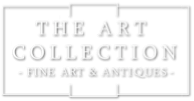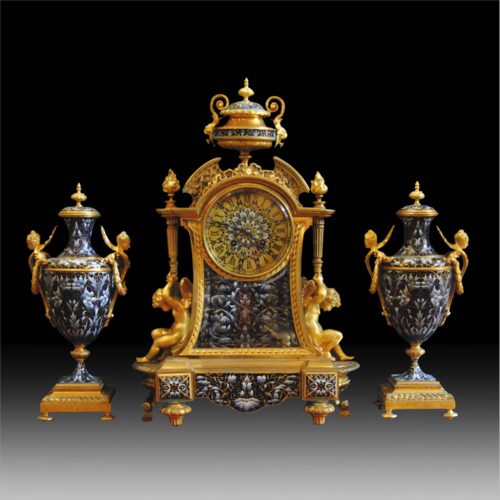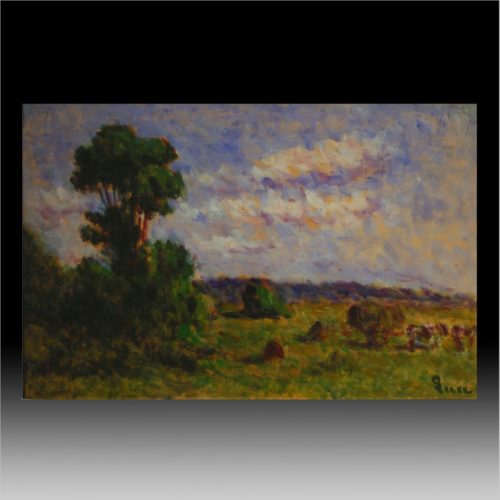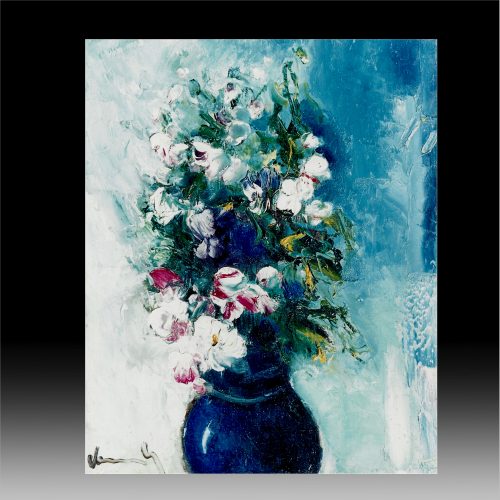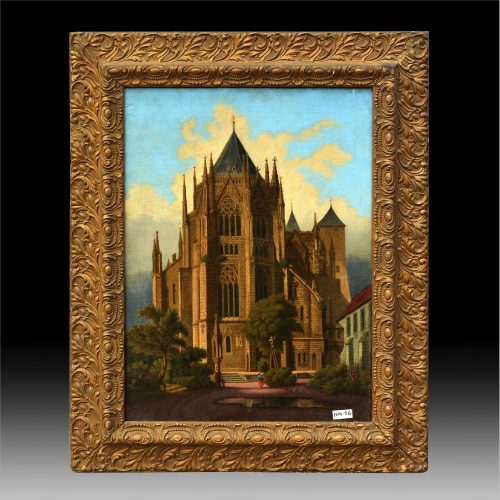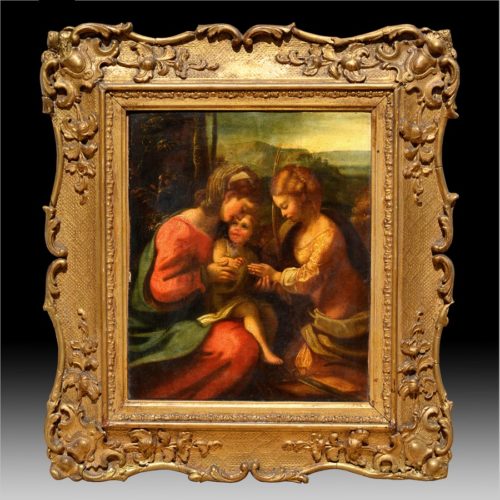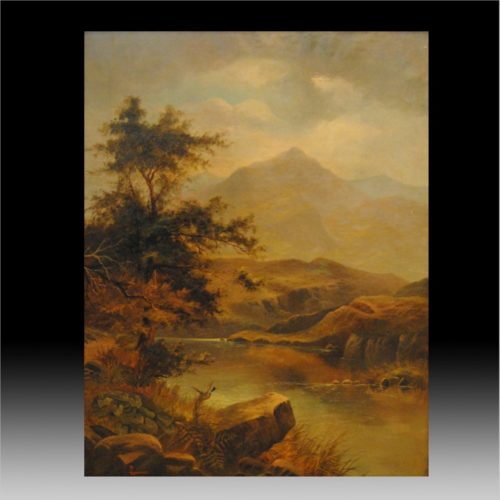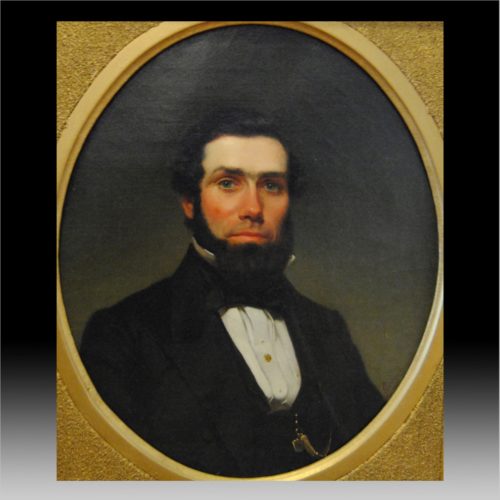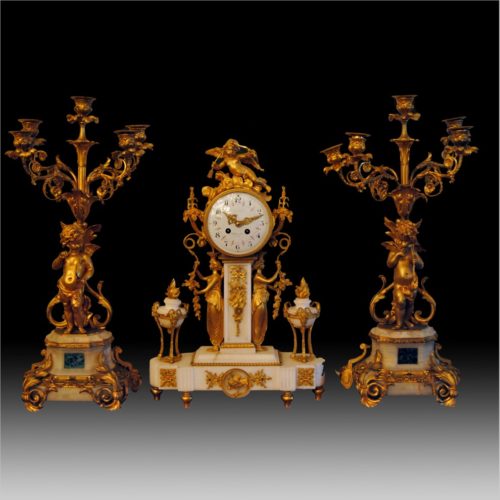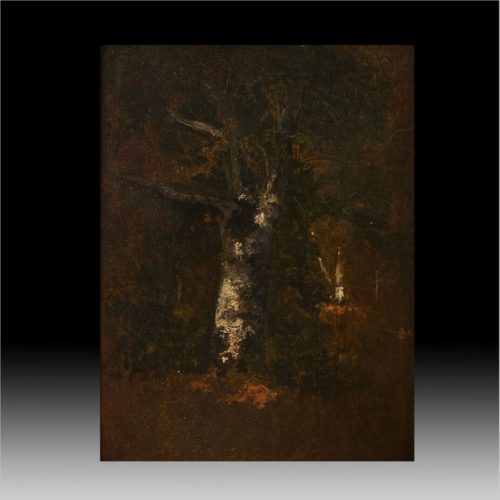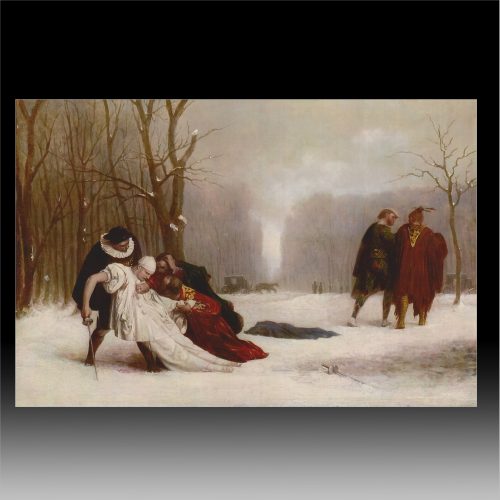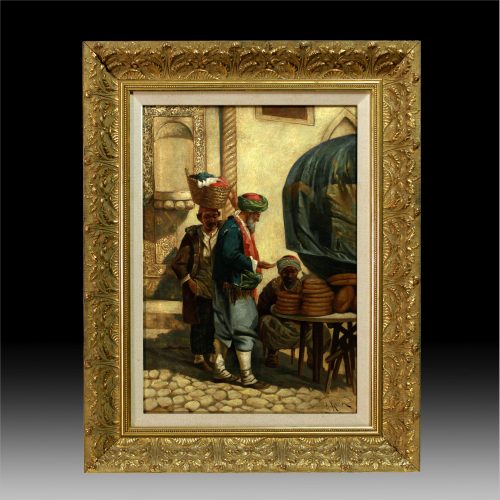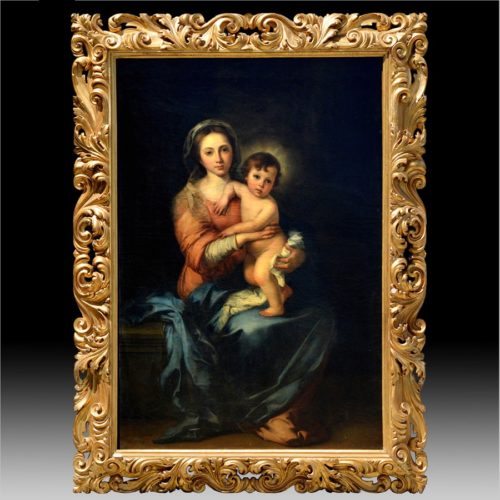-
A Champlevé & Gilt-Bronze Clock Garniture (Set of 3 Pieces). Paris, circa 1880. The clock with Roman numeral dial above a glazed panel enclosing a stylized dark and light blue and white enamel foliate design, surmounted by a covered urn and flanked by putti upholding torches, on a shaped rectangular base and toupee feet. The clock dial is signed, E. Henry Paris; flanked by a pair of covered urn of ovoid form with handles in the form of Elizabethan maiden’s heads, on square bases and disc feet, the movement stamped 24568, striking on a bell. Clock Height: 18 ½ inches Vase Height (2): 11 inches SSP2999-353 AC43989 F-376
-
Maximilien Luce (French, 1858–1941) “La fenaison a I’lli de France” Oil on paper laid down on canvas 11 ¼”x 17 ½” Stamped lower right COA by J. Bouin-Luce Maximilien Luce (13 March 1858 – 6 February 1941) was a prolific French Neo-impressionist artist, known for his paintings, illustrations, engravings, and graphic art, and also for his anarchist activism. Starting as an engraver, he then concentrated on painting, first as an Impressionist, then as a Pointillist, and finally returning to Impressionism. Born on 13 March 1858 in Paris. His parents, of modest means, were Charles-Désiré Luce (1823–1888), a railway clerk, and Louise-Joséphine Dunas (1822–1878). The family lived in the Montparnasse, a working-class district of Paris. Luce attended school at l'Ecole communale, beginning in 1864. In 1872, the fourteen-year-old Luce became an apprentice with wood-engraver Henri-Théophile Hildebrand (1824–1897). During his three-year xylography apprenticeship, he also took night classes in drawing from instructors Truffet and Jules-Ernest Paris (1827–1895). During this period, Luce started painting in oils. He moved with his family to the southern Paris suburb of Montrouge. His art education continued as he attended drawing classes taught by Diogène Maillard (1840–1926) at the Gobelins tapestry factory. Luce began working in the studio of Eugène Froment (1844–1900) in 1876, producing woodcut prints for various publications, including L'Illustration and London's The Graphic. He took additional art courses, at l'Académie Suisse, and also in the studio of portrait painter Carolus-Duran (1837–1917). Through Froment's studio, Luce became friends with Léo Gausson and Émile-Gustave Cavallo-Péduzzi. These three artists spent time around Lagny-sur-Marne creating Impressionist landscapes.
-
Maurice de Vlaminck (French, 1876-1958) “Fleurs dans un vase bleu” Oil on canvas 18”x 14” Signed lower left COA by Wildenstein Institute
-
D. Lawrence R.A. “Lake” Oil on canvas 35” x 28 ½” Signed @AC-NB
-
John George Brown 1831-1913 Portrait of a Man Oil on canvas 10 ½” x 12 ½” AC12000 AC28000 @AC-NB
-
CLOCK (F-785): A Louis XVI Style Ormolu-mounted Carrara Marble Mantel Clock, circa 1890. The circular enamel dial surmounted by a cloud borne Cupid, on rectangular pedestal flanked by classically-draped caryatids issuing scrolling and fruiting foliage, above a shaped rectangular plinth mounted with -urn en flambeau finials supported on triple ram’s head monopodiae and inset to the front with a cockerel, on toupie feet, the dial inscribed […]/240 RUE RIVOLI/A PARIS 21 ¼ inches Candelabra: A Pair of Gilt-Bronze and Onyx Candelabra. Each base has malachite square on the front and Putto holding a Five-Light branch stem. Height: 23 inches. (AC10000) CNYAPR2401-121 AC19740 F-785 / F-64
-
Narcisse Virgilio Díaz de la Peña (French, 1807-1876) “La foret” oil on canvas 18’’x 12’’
-
After Jean Leon Gerome (French, 1824-1904) Sortie du Bal Masque Oil on panel. 9 x 13 ¼ in. (23 x 32.5 cm)
-
Aleksei Mikhailovich Korin (Russian, 1865-1923 The bread seller oil on canvas
